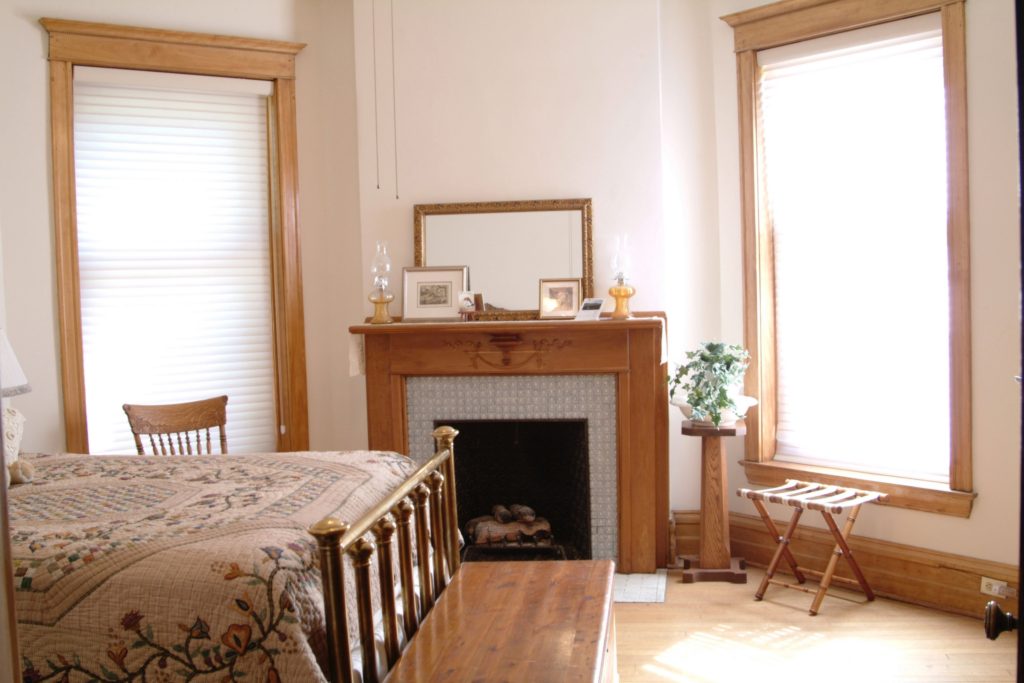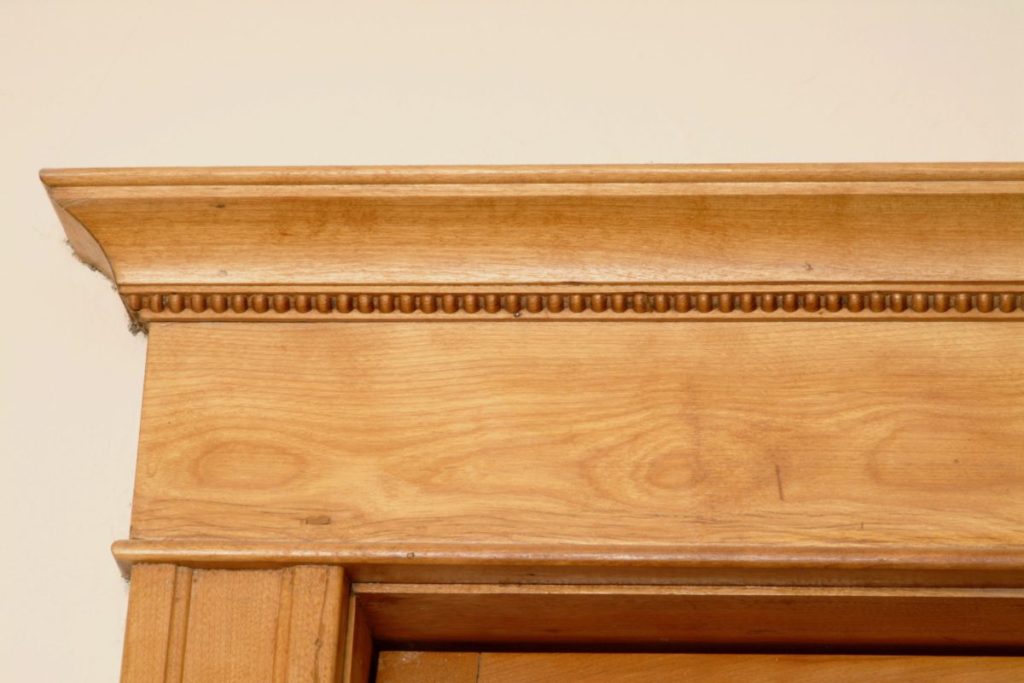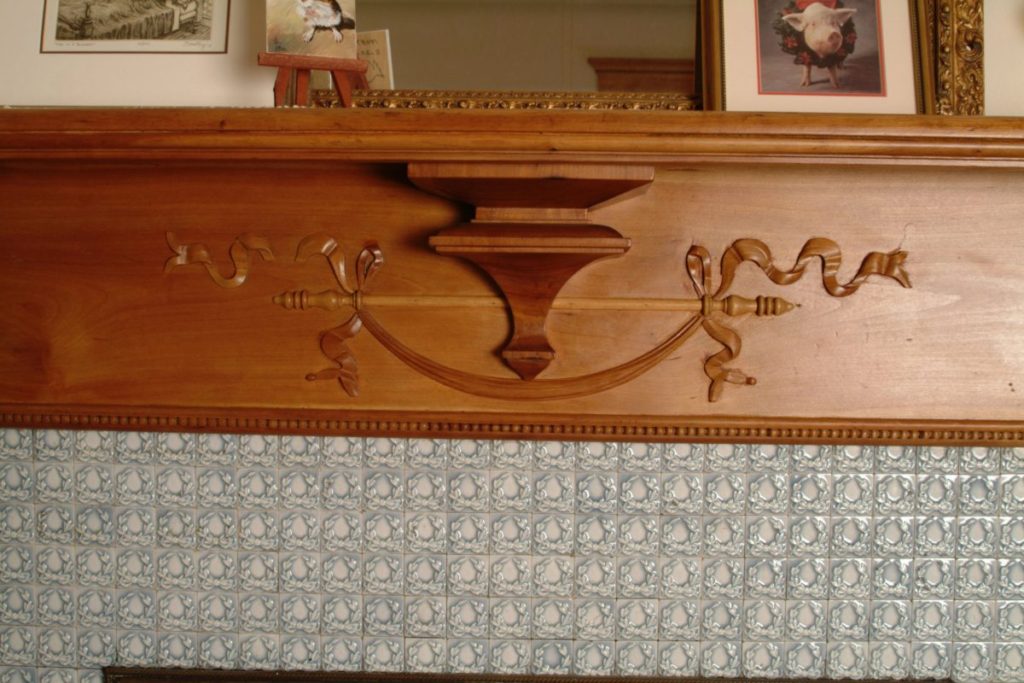Finish Removal
Finish removal is NOT grunt work

Finish removal is typically the first phase of most architectural wood restoration projects. On many work crews, this task is delegated to the least qualified worker onsite. But this is a mistake, a mistake that can hardly be afforded when working with irreplaceable wood elements such as the trim, doors, and fireplace surround in this stately 1880’s Victorian Bed and Breakfast bedroom.

Before we restored it, all the wood in this room was painted, including the intricate bead work in the door frame header and the hand-carved ribbon motif in the fireplace surround. Imagine if an unskilled worker had been handed a heat gun, instructed to begin removing layers of paint as the general contractor then walks off to deal with more “important” matters. Without training and experience, he most likely would have damaged the wood with burn marks like these.

Another common problem that requires substantial experience to discern is the faint “paint haze” that often remains after the less discerning eye of the unskilled worker convinces him his work is done. He may not even realize the reason, later on, that his finish coats of varnish look milky. And he won’t likely realize this milkiness is the result of inadequate finish removal. These are just two of many mistakes that are made by unskilled workers being assigned, without supervision, the task of finish removal.
